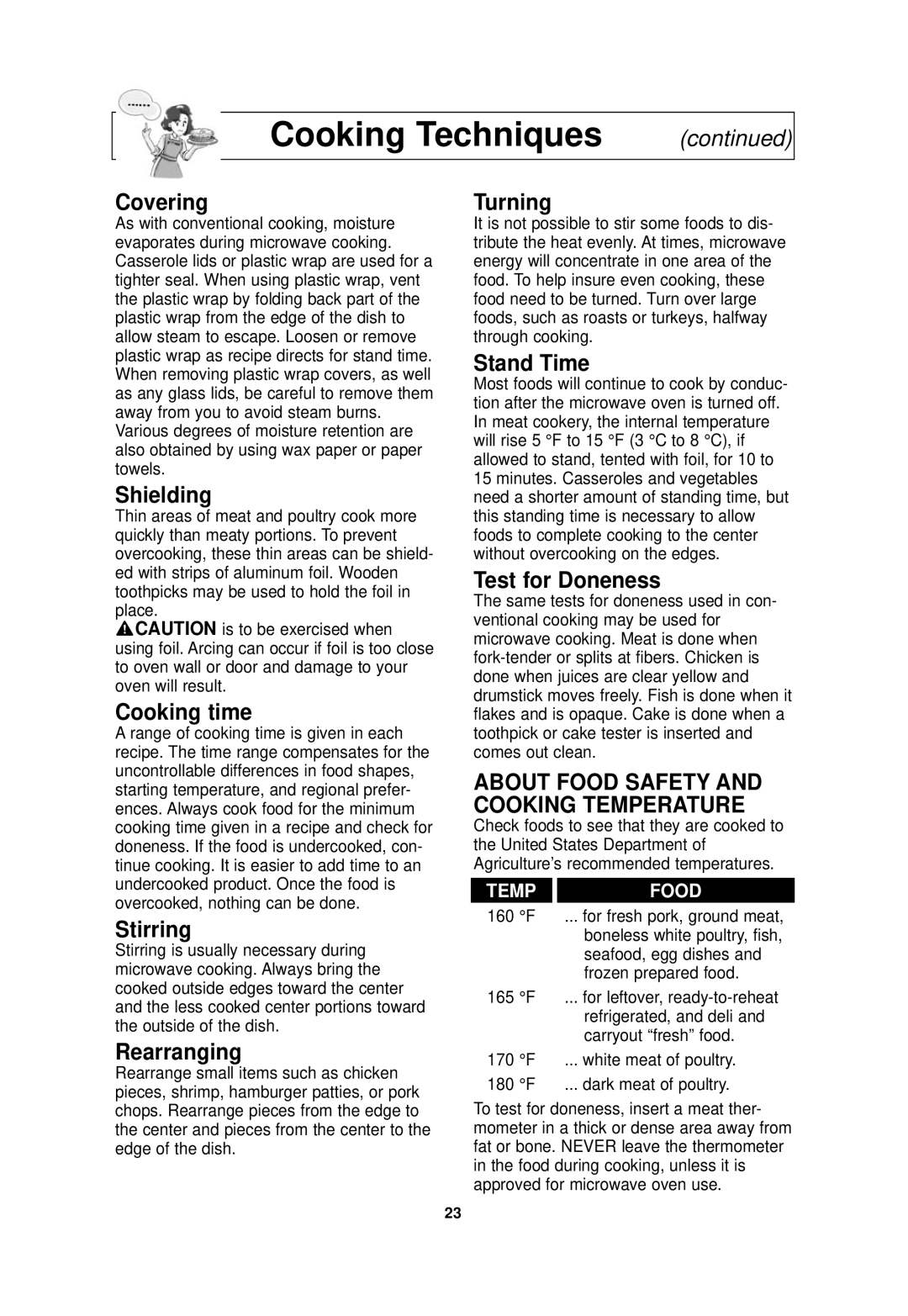NN-SA610S, NN-SA710S specifications
The Panasonic NN-SA710S and NN-SA610S are two innovative microwave oven models that exemplify Panasonic’s commitment to providing high-quality kitchen appliances. Both models are designed to meet the needs of modern households, combining advanced cooking technologies with user-friendly features.One of the standout characteristics of these models is the Inverter Technology. This cutting-edge technology allows for consistent and even cooking, as opposed to the traditional microwave systems that work in a series of bursts. With Inverter Technology, the power level is continuously adjusted, ensuring that food is cooked uniformly without any cold spots. This feature is particularly useful for defrosting and reheating, as it maintains the moisture and flavor of the food.
The NN-SA710S and NN-SA610S also come equipped with a sleek and compact design, making them suitable for any kitchen space. Their stainless-steel finish adds a touch of elegance, while the easy-to-read control panel simplifies operation. Additionally, these models offer multiple cooking presets and auto-cook options, allowing users to prepare a variety of dishes with ease.
In terms of capacity, the NN-SA710S offers a slightly larger interior compared to the NN-SA610S, making it ideal for bigger families or meal preparations. However, both models provide ample space to cook or reheat dishes, enhancing their usability.
The sensor cooking feature is another significant advantage of these microwave ovens. By using built-in sensors to detect the humidity levels inside the oven, the microwaves can automatically adjust cooking times and power levels for optimal results. This intuitive function ensures that meals are cooked perfectly, eliminating any guesswork.
Energy efficiency is another aspect where these ovens excel. With their efficient design and technology, they consume less energy compared to conventional microwaves, making them an environmentally friendly choice for consumers.
Overall, the Panasonic NN-SA710S and NN-SA610S are excellent choices for those seeking reliability and versatility in a microwave oven. With their advanced features, user-friendly interfaces, and sleek designs, they cater to the demands of contemporary cooking while promoting energy efficiency. Whether reheating leftovers or preparing a delicious meal, these models stand out for their performance and ease of use, making them worthy additions to any kitchen.

